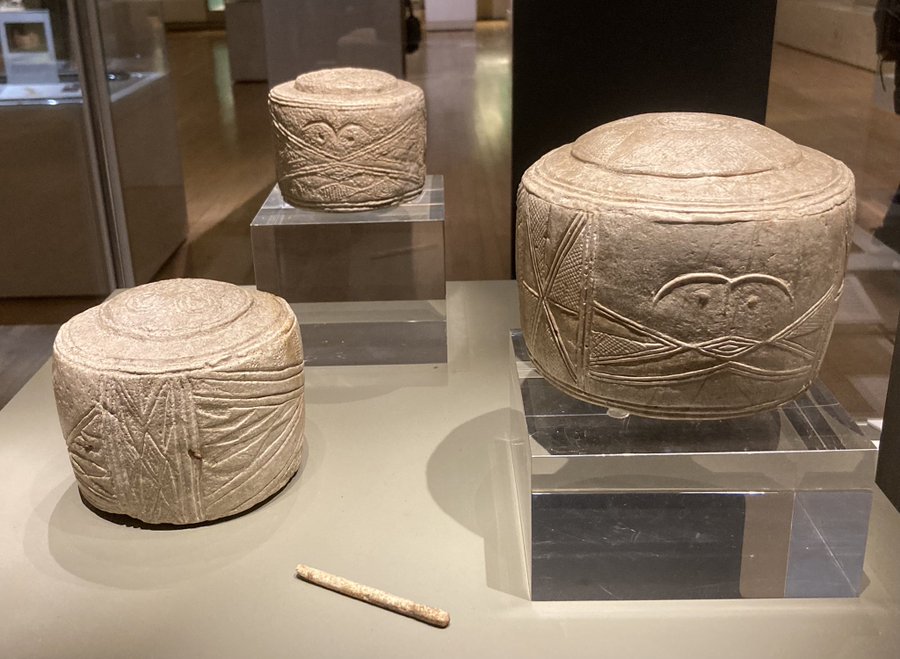The diameter of the Folkton Drums and the Lavant Drum seem to be based on the "long foot" (1.056 ft) discovered by Andrew Chamberlain and Mike Parker Pearson. The drums ratios are 1:7:8:9 to the long foot respective (the Lavant Drum last).
What was the origin of the stone used to manufacture these? Do the designs on the drums have a potential mnemonic use for the builders which may have used them as measuring devices?
These are held by the British Museum: https://www.britishmuseum.org/collection/object/H_1893-1228-15
Their round nature may have made them easy to roll out measurements. the grooved "tops" may have allowed them to roll on wooden beams of some sort.
What relationship, if any, is the bone pin that was found with them?
<small><cite class='h-cite via'>ᔥ <span class='p-author h-card'>Alison Fisk </span> in "The Folkton Drums. Three cylinders carved from chalk about 5,000 years ago, during the Neolithic period. Decorated with geometric designs and stylised faces. Discovered, along with a bone pin, in a child’s round barrow (burial) in Yorkshire in 1889. #FindsFriday #Archaeology https://t.co/6IyUTN9bCt" (<time class='dt-published'>12/11/2021 09:11:48</time>)</cite></small>
